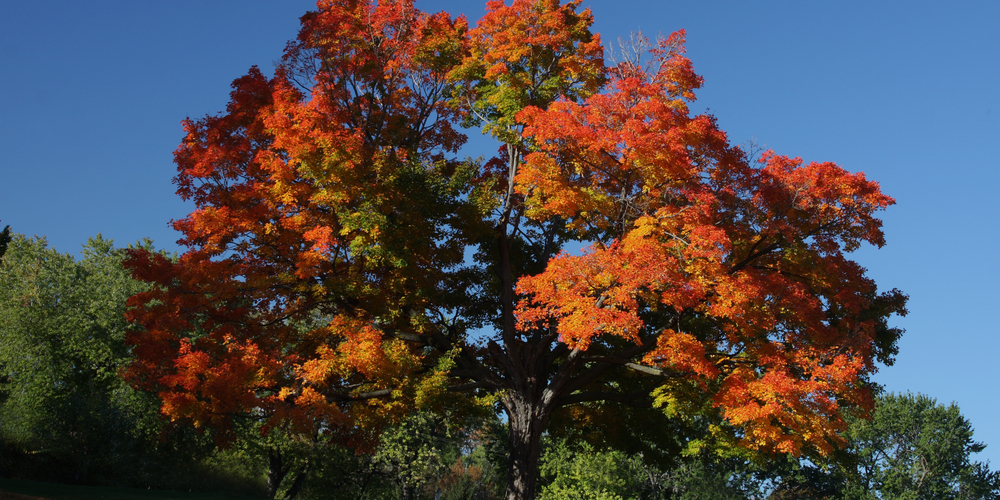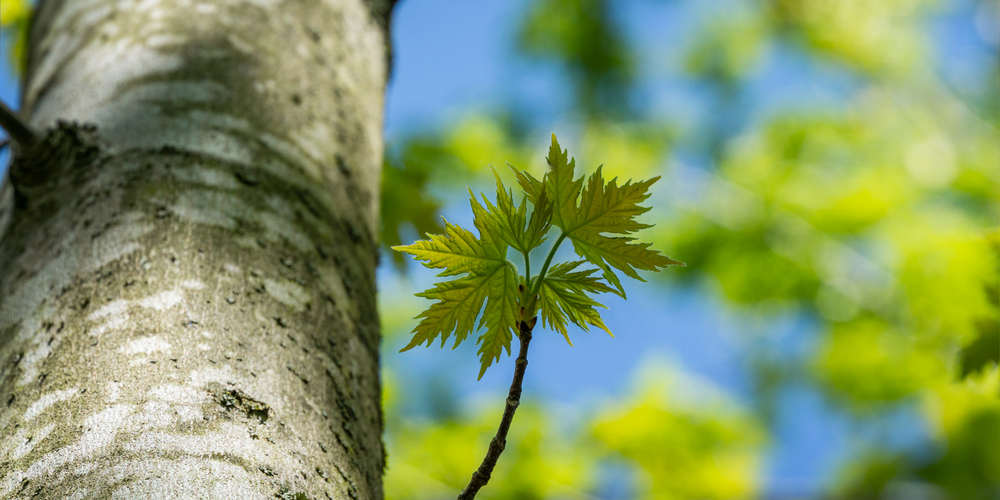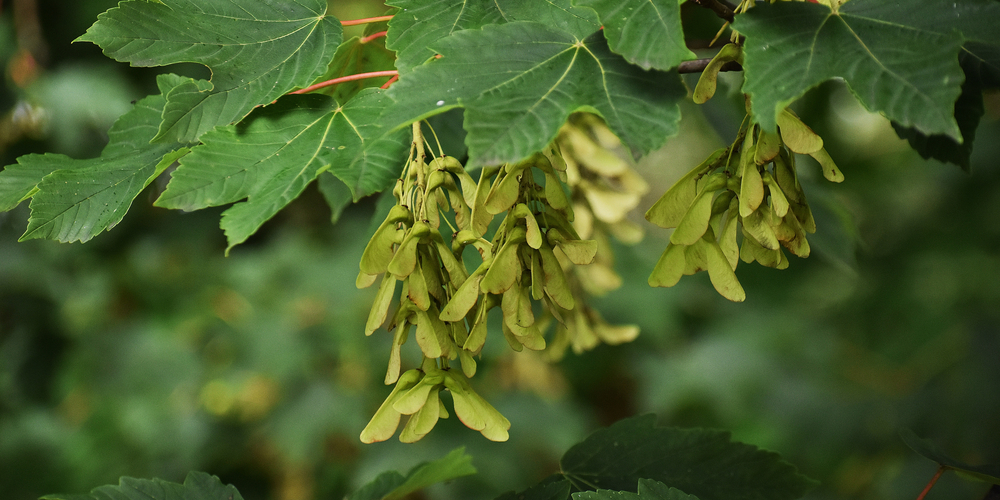Illinois belongs to hardiness zones 5, 6, and 7. This means that different areas of the state can support different types of vegetables and plants. Typically, the Illinois climate can be pretty continental, with very long warm, humid, and wet summers.
On the other hand, winters are freezing, snowy and windy, and it can get partly cloudy all year round. Despite the frequent fluctuations in temperature and humidity, most consider spring and fall to be the most pleasant times in Illinois due to the moderate temperatures at the time.
Maple Trees Illinois
Maple trees do well in cool temperatures and prefer moist, deep, and well-drained soil. There are also a few that can withstand sub-zero winters as those experienced in zone 3. Their USDA plant hardiness zones range between zone 5 to zone 9. Therefore, they can grow well in several places, including Illinois (or even Colorado).
Maple trees can live very long and come in various colorful variations. Each type of maple tree has unique needs and thrives in other areas compared to others. This article looks at some kinds of maple trees that do well in Illinois. They include:
Sugar maple
Sugar maples (Acer saccharum) are an Illinois native and one of the most common maple varieties you can find in Illinois. The sugar maple grows well in zones 3 through 5 and enjoys cold temperatures in the winter. Sugar maples are a favorite and highly prized for their sap-producing abilities.
This maple tree species produces exceptionally sweet sap suitable for making delicious maple syrups. The catch is that only fully grown, mature, or aged maple trees are ideal for harvesting. This could take up to 40 years. No wonder maple syrup is expensive! Another determining factor is that it takes two to three sugar maples to tap a single gallon of maple syrup.
Nevertheless, sugar maples are gorgeous, thanks to their vibrant foliage display. Towards fall, they showcase their rich yellow-green leaves and transition into unique shades of orange, yellow and red, consequently, picturesque landscapes.
Red maple
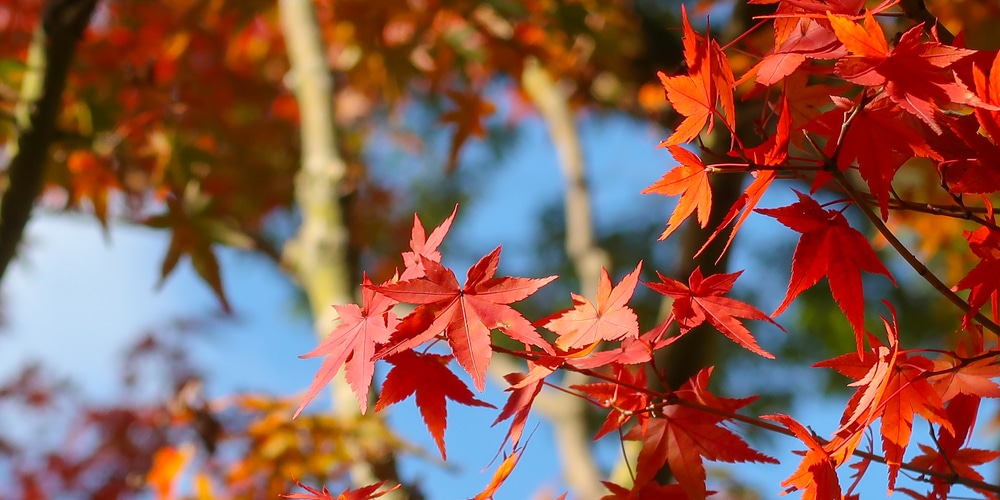
It is not difficult to get sight of the red maple due to its rich crimson red foliage. In the fall, they can also transition into a golden yellow. Red maples are also unique for their fast-growing quality as they can grow by o.61 meters (24 inches) every year. They can go as high as 100 feet tall with a robust root system.
Otherwise known as soft or swamp maple, red maples can grow in very moist, acidic, sandy, and well-drained soil or clay soils. Ideally, 6 hours of sunlight a day keeps them happy. They usually tolerate a wide range of temperatures and grounds and are primarily found in hardiness zones 3 through 9. Wood from the red maple tree is used in making veneer, musical instruments, and furniture. They are also sources for maple syrup.
Silver maple
Silver maple, also known as the Creek maple, grows in zones 3 to 9 and can withstand extremely harsh conditions like flooding and drought. They are pretty content with just 4 hours of sunlight a day, although they prefer to grow in shadier areas. They love very moist soils; therefore, it is essential to ensure they are adequately hydrated during extended periods of drought.
Silver maples are so-called due to their distinct large green leaves with silvery undersides –responsible for their shimmering in the breeze. In the fall, the green leaves gracefully turn into eye-catching shades of yellow and chartreuse.
Sycamore maple
The sycamore maple can tower well above 100 feet in height. It also has a very thick trunk that can grow to a circumference of up to 7 feet. You will easily catch these giant trees on the city roadsides and backyards in several parts of Illinois. Their dark green leaves have light gray-green undersides and follow suit by turning into golden yellow or red hues in fall.
This tree grows relatively fast- more than two feet annually. The American sycamores grow well in plant hardiness zones 4B through 9A. They grow well in temperate coastal areas worldwide and are considered invasive in others.
Striped maple
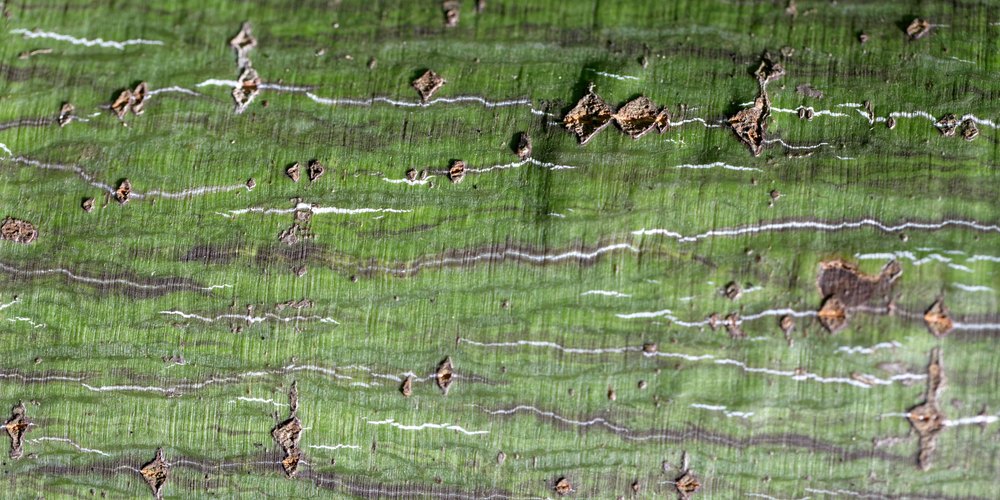
Striped maple, otherwise known as Moose maple or goosefoot maple, are native to North America. They commonly grow in areas mapped as zone 4. They thrive in moist, well-drained soils and prefer just a slight acidity in their soil. Although they can grow in the full sun, they appreciate some shade, especially in hot summer afternoons.
Striped maple trees are characterized by smaller size and fantastic foliage. These understory variants have vertical green stripes on their barks and very broad leaves, which are slightly different from other maple trees due to their three shallow and pointed leaves. This is contrary to the five-lobed leaves found in other species. These leaves turn into a lighter shade of yellow in the fall.
Maple Trees Illinois: Conclusion
Maple trees are pretty cool to have in your compound in Illinois. You can be sure Maple Trees Illinois will give you a show all year round, thanks to their fantastic change in hues, especially in the fall.
Related article: What planting zone is Illinois in?
